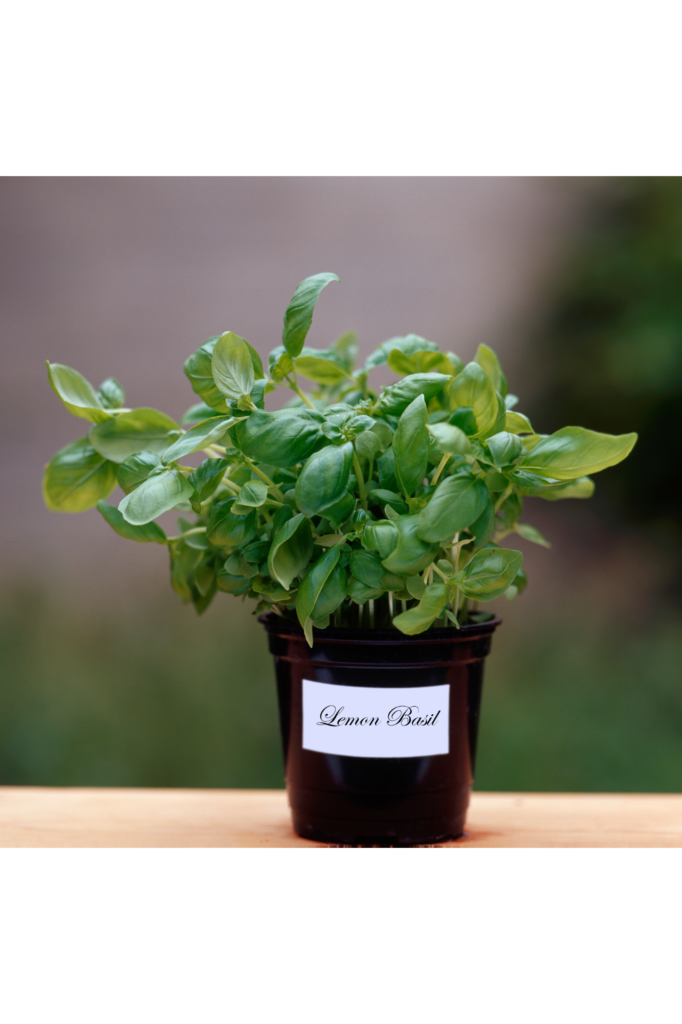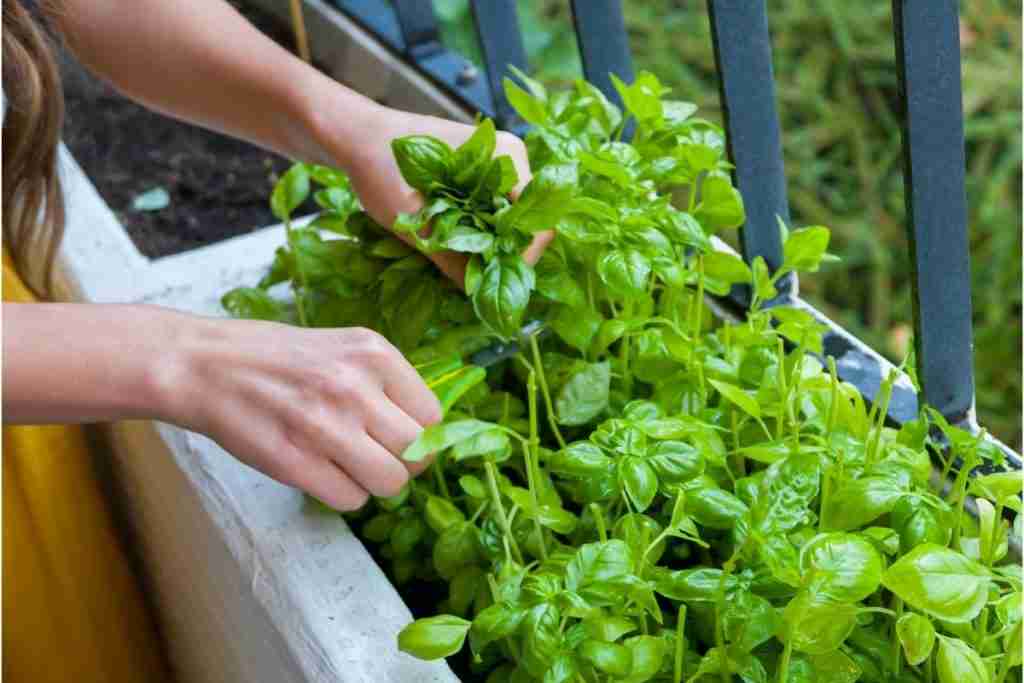Basil is one of the most popular herbs used in cooking, and it’s also a great plant to grow indoors. Not only is it easy to grow, but it also adds a touch of freshness and flavour to any dish. Whether you’re a seasoned gardener or a beginner, growing basil as an indoor plant is an enjoyable and rewarding experience. In this article, we’ll provide you with all the information you need to grow basil successfully indoors.


Table of Contents
Choosing the right type of basil
Before you start growing basil indoors, you need to choose the right type of basil for your needs. There are many different types of basil, and each has its own unique flavour and characteristics. Some of the most popular types of basil include:
- Sweet basil: This is the most common type of basil and is used in many different types of dishes. It has a slightly sweet and spicy flavour.
- Genovese basil: This is a variety of sweet basil that’s commonly used in Italian cooking. It has a more intense flavour than sweet basil.
- Thai basil: This variety has a slightly different flavour than sweet basil and is commonly used in Thai and Vietnamese cuisine.
- Lemon basil: This variety has a citrusy flavour and is often used in teas and desserts.



Choosing the right container
When growing basil indoors, you need to choose the right container. Basil prefers well-draining soil and needs a container with good drainage. You can choose from a wide variety of containers, including clay pots, plastic pots, and even recycled containers like old coffee cans or yogurt containers.
It’s important to choose a container that’s the right size for your basil plant. If the container is too small, the plant won’t have enough room to grow and may become root-bound. If the container is too large, the soil may not dry out properly, which can lead to root rot.
Choosing the right soil
Basil prefers well-draining soil that’s rich in organic matter. You can either use a pre-made potting mix or make your own using equal parts of peat moss, perlite, and vermiculite. Avoid using garden soil, as it’s too heavy and may not drain well.
Providing the right amount of light
Basil needs plenty of light to grow, so it’s important to place your container in a spot that receives at least six hours of direct sunlight per day. If you don’t have a sunny spot in your home, you can also use grow lights to provide the necessary light. If you’re using grow lights, make sure to position them so they’re about six inches above the plant. Keep the lights on for about 12-16 hours per day.
Watering your basil
Basil needs to be watered regularly, but it’s important not to overwater it. Make sure the soil is moist, but not soggy. You can check the moisture level by sticking your finger about an inch into the soil. If it feels dry, it’s time to water. When watering your basil, make sure to water the soil, not the leaves. Watering the leaves can lead to fungal diseases.
Fertilising and Pruning your basil
Basil needs to be fertilised regularly to grow strong and healthy. You can use a balanced fertiliser, such as a 10-10-10 fertiliser, once a month during the growing season. If you’re using a liquid fertiliser, make sure to dilute it according to the instructions on the label. Pruning your basil is important for encouraging bushy growth and preventing the plant from becoming too leggy. You can pinch off the tips of the plant when it reaches about six inches in height. This will encourage the plant to branch out and become bushier.


Common Pests and Diseases
Just like any other plant, basil is susceptible to pests and diseases. Here are some common pests and diseases that may affect your indoor basil plants:
Aphids
Aphids are small, soft-bodied insects that can feed on the leaves and stems of your basil plant. They can cause stunted growth and yellowing of leaves. You can control aphids by spraying the plant with a solution of water and dish soap or by using insecticidal soap.
Whiteflies
Whiteflies are tiny, white insects that can suck the sap from your basil plant. They can cause yellowing of leaves and stunted growth. You can control whiteflies by using sticky traps or by spraying the plant with insecticidal soap.
Spider mites
Spider mites are tiny pests that can spin webs on the leaves of your basil plant. They can cause yellowing of leaves and stunted growth. You can control spider mites by spraying the plant with a solution of water and dish soap or by using insecticidal soap.
Fusarium wilt
Fusarium wilt is a fungal disease that can cause the leaves of your basil plant to turn yellow and wilt. The roots of the plant may also turn brown and decay. You can prevent Fusarium wilt by making sure your soil is well-draining and by avoiding overwatering your plant.
Downy mildew
Downy mildew is a fungal disease that can cause yellowing of leaves and a white or gray fuzz to appear on the underside of leaves. You can prevent downy mildew by making sure your plant has good air circulation and by avoiding overhead watering.
Root rot
Root rot is a fungal disease that can cause the roots of your basil plant to turn brown and decay. It can be caused by overwatering or poorly-draining soil. You can prevent root rot by making sure your soil is well-draining and by avoiding overwatering your plant.
If you notice any signs of pests or diseases on your basil plant, it’s important to take action right away to prevent the problem from spreading. You can often control pests and diseases by using organic methods like neem oil, insecticidal soap, or pruning affected leaves. If the problem persists, you may need to use a stronger chemical control or consult with a professional gardener.
Harvesting basil
Harvesting basil is a simple process, but it’s important to do it correctly to ensure that the plant continues to grow well and produce more leaves. Here’s how to harvest basil from your indoor plant:
- Wait until the plant has grown to a good size before harvesting. It’s best to wait until the plant is at least 6 inches tall (15 centimeters) before harvesting any leaves.
- Use clean, sharp scissors or garden shears to cut the stems of the basil plant. Make sure to cut just above a pair of leaves, leaving a small stem attached to the leaves.
- Harvest only about one-third of the plant at a time. This will help the plant to continue growing and producing more leaves.
- Avoid cutting the main stem of the plant. This can cause the plant to become top-heavy and may cause it to stop producing new leaves.
- Harvest basil in the morning when the leaves are at their most flavourful. The essential oils that give basil its flavour are most concentrated in the leaves in the morning.
- If you want to harvest a larger amount of basil, you can cut the stems back by half to encourage more bushy growth. This is known as “pinching back” the plant.
- Store harvested basil in a plastic bag or airtight container in the refrigerator. Fresh basil will keep for several days in the refrigerator.
- You can also freeze basil for later use. To freeze, chop the leaves and place them in an ice cube tray with a little bit of water. Freeze the tray and then transfer the cubes to a freezer bag. Frozen basil will keep for several months in the freezer.
Conclusion
Growing basil as an indoor plant is a great way to enjoy fresh herbs all year round. By following the tips in this article, you can create the ideal growing conditions for your basil plant and ensure that it stays healthy and productive. Remember to choose a sunny location for your plant, use well-draining soil, and water it regularly. You can also fertilise your plant occasionally to promote growth.
Harvesting your basil correctly is also important. Use clean, sharp scissors or garden shears to cut the stems, and only harvest about one-third of the plant at a time. This will help the plant to continue producing new leaves. Finally, keep an eye out for pests and diseases, and take action right away if you notice any signs of a problem. By following these tips, you can enjoy fresh, delicious basil from your indoor plant for months to come.
